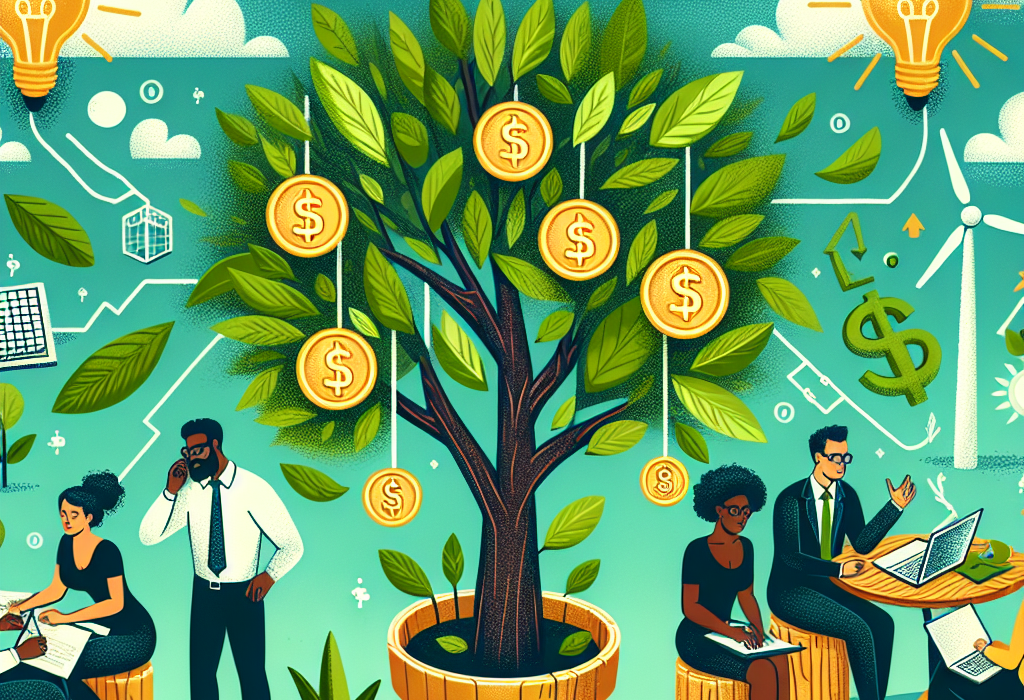In recent years, the mounting pressures of climate change, resource depletion, and environmental degradation have necessitated a transformative shift in how economies operate. Enter the Green Economy—an economic paradigm that prioritizes sustainable development, low carbon footprints, and the efficient use of resources. This movement is rapidly gaining momentum, driving innovative business models that not only promise economic growth but also ensure environmental stewardship and social well-being.
The Basics of a Green Economy
A green economy is defined by the United Nations Environment Programme (UNEP) as one that "results in improved human well-being and social equity, while significantly reducing environmental risks and ecological scarcities." It encompasses a wide range of sectors including renewable energy, waste management, green infrastructure, sustainable agriculture, and eco-friendly manufacturing processes.
Key Characteristics:
- Low Carbon Footprint: Reduction in greenhouse gases.
- Resource Efficiency: Optimal use of natural resources.
- Social Inclusiveness: Ensuring equitable opportunities for all.
Driving Factors Behind the Green Economy
Climate Change and Environmental Awareness
With the relentless march of climate change, the urgency for sustainable practices has never been greater. Consumers, governments, and international organizations are increasingly recognizing the need for a paradigmatic shift towards sustainability.
Policy and Regulations
Regulatory frameworks across the globe are evolving to support green initiatives. Carbon taxes, subsidies for renewable energy, and stricter emissions standards are driving businesses to innovate and align with eco-friendly practices.
Consumer Demand
A significant shift in consumer attitudes toward sustainability is evident. Modern consumers are more environmentally conscious, willing to pay a premium for sustainable products and services. This shift in demand is creating new market opportunities for businesses.
Innovative Business Models in the Green Economy
Circular Economy
One of the most impactful models emerging from the green economy is the Circular Economy. Unlike traditional linear models (take-make-dispose), the circular economy is regenerative by design. It focuses on extending product life cycles through reusing, repairing, refurbishing, and recycling. Companies like Ellen MacArthur Foundation are pioneering this approach by collaborating with businesses to innovate circular solutions.
Renewable Energy Ventures
Renewable energy sources such as solar, wind, and hydro are becoming increasingly viable and cost-effective. Businesses are either transitioning to renewable energy or are entirely based on providing these clean energy solutions. Companies like Tesla and Vestas are front-runners in revolutionizing energy sectors with sustainable technology.
Green Financing
Financial institutions are catching onto the green wave, offering specialized funds and financial products to support sustainable projects. Green bonds and sustainability-linked loans are innovative financial instruments designed to fund projects that have positive environmental impacts. Banking giants like HSBC and JP Morgan have launched green investment portfolios to attract eco-conscious investors.
Eco-friendly Manufacturing
Many companies are adopting eco-friendly manufacturing techniques, utilizing sustainable materials, and minimizing waste. Innovators like Patagonia and Interface are leading the way in adopting sustainable production practices that reduce their environmental impact.
Challenges and the Road Ahead
While the transition to a green economy is promising, it is not without challenges. High initial costs, technological barriers, and lack of awareness are significant hurdles. Yet, the long-term benefits—economic resilience, environmental preservation, and enhanced quality of life—far outweigh these obstacles.
Strategic public-private partnerships, continuous innovation, and education will play essential roles in surmounting these challenges. The global shift to a green economy is not just an idealistic vision but a pragmatic necessity. As businesses adapt and innovate to align with sustainable principles, they open new avenues for growth, resilience, and relevance in an increasingly eco-conscious world.
Conclusion
The green economy represents an essential shift toward sustainability and resilience. By embracing sustainable practices and innovative business models, companies are not just contributing to environmental preservation but are also setting themselves up for long-term success. The journey towards a green future is complex and challenging, but it promises a more sustainable, equitable, and prosperous world.
As the saying goes, "The best time to plant a tree was 20 years ago. The second-best time is now." The green economy is that tree, and it’s high time we nurture it.

